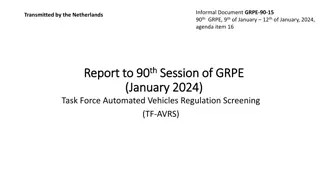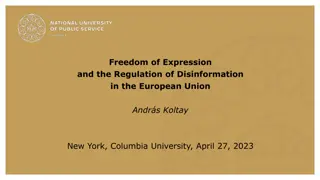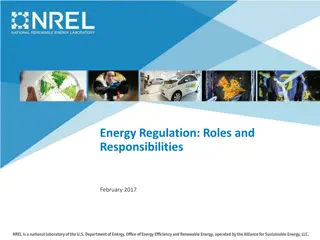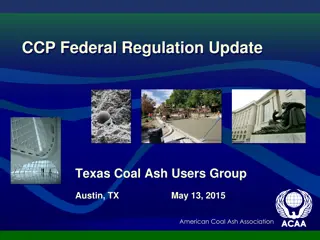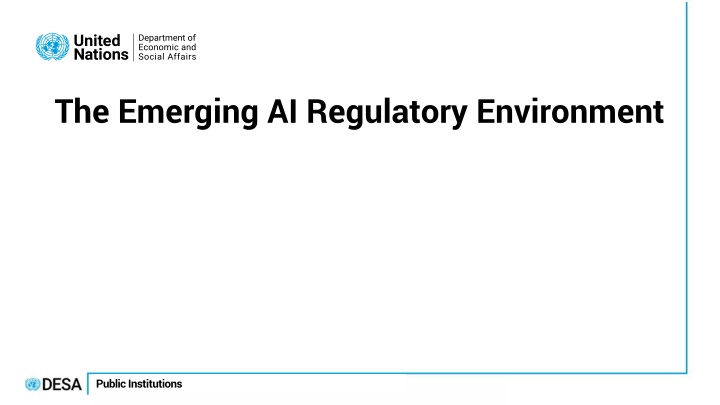
Navigating the AI Regulatory Landscape in Public Institutions
Explore the evolving AI regulatory environment in public institutions, analyzing the increasing pace of AI advancements, governance gaps, policy reactions, and existing and proposed legislation in the European Union and United States. Understand the implications for AI models, infrastructure, and applications, with a focus on risk-based approaches and accountability measures.
Uploaded on | 1 Views
Download Presentation

Please find below an Image/Link to download the presentation.
The content on the website is provided AS IS for your information and personal use only. It may not be sold, licensed, or shared on other websites without obtaining consent from the author. If you encounter any issues during the download, it is possible that the publisher has removed the file from their server.
You are allowed to download the files provided on this website for personal or commercial use, subject to the condition that they are used lawfully. All files are the property of their respective owners.
The content on the website is provided AS IS for your information and personal use only. It may not be sold, licensed, or shared on other websites without obtaining consent from the author.
E N D
Presentation Transcript
The Emerging AI Regulatory Environment Public Institutions
Context - Increasing pace of improvement in AI systems - 50% of AI experts believe unaided machines will be able to do every task better and more cheaply than humans by 2061 or earlier; 90% within a century (Katja Grace et al. 2022) Public Institutions
AI governance capacity significantly lags AI Engineering Public Institutions
Policy Reactions - Need to approach each part of the tech stack individually: essentially i) infrastructure, ii) models, and iii) applications - Case Studies: - European Union - United States - India Public Institutions
European Union Existing legislation: Digital Services Act (DSA) Digital Markets Act (DMA) General Data Protection Regulation (GDPR) Implications for AI: model training, finetuning and applications Public Institutions
European Union AI Act (2024) Risk-Based Approach Focussed on application not models or infrastructure Tech stack Infrastructure: less emphasis but environmental impact noted Models: governs data usage, transparency and governance processes Applications: strong emphasis with scope to ban or fine applications for introducing risks and real harms Public Institutions
United States Existing legislation: Algorithmic Accountability Act (2022) The Algorithmic Justice and Online Platform Transparency Act (2022) The National Artificial Intelligence Act (2021) Implications for AI: primarily applications Public Institutions
United States Proposed legislation: Currently evolving but no unified legislation in progress Executive Order (2024) on AI Tech stack Infrastructure: strong emphasis on cloud computing infr. Reporting Models: Defence Production Act used to compel companies to report testing results Applications: less emphasis than EU AI Act Public Institutions
India Proposed legislation: Draft legislation on AI capabilities Tech stack Infrastructure: minimal Models: required all models to be registered and approved before deployment; considered the strictest proposal to date Applications: less emphasis than EU AI Act or US drafts Draft proposals dropped after consultation Public Institutions








